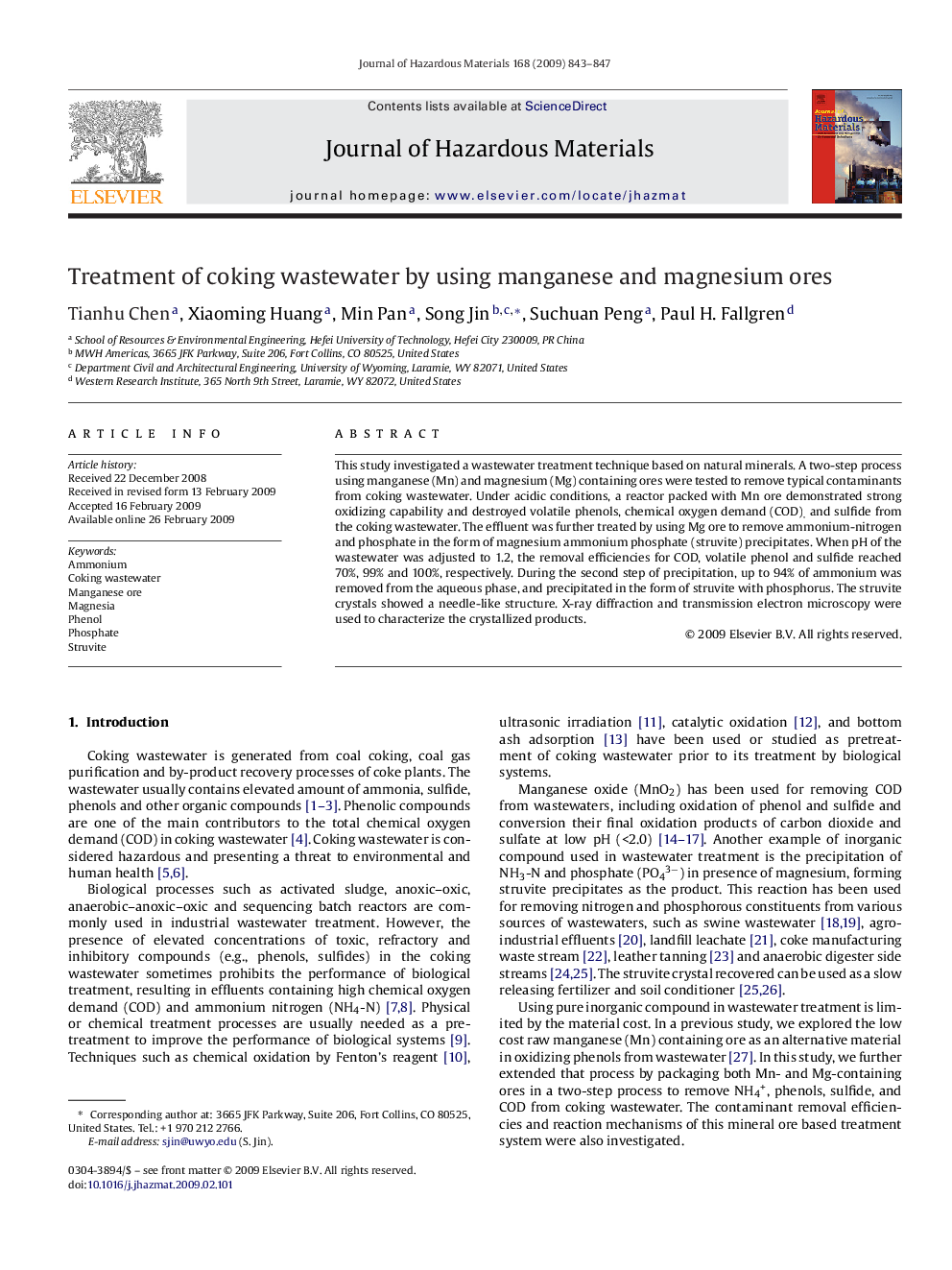| Article ID | Journal | Published Year | Pages | File Type |
|---|---|---|---|---|
| 581679 | Journal of Hazardous Materials | 2009 | 5 Pages |
Abstract
This study investigated a wastewater treatment technique based on natural minerals. A two-step process using manganese (Mn) and magnesium (Mg) containing ores were tested to remove typical contaminants from coking wastewater. Under acidic conditions, a reactor packed with Mn ore demonstrated strong oxidizing capability and destroyed volatile phenols, chemical oxygen demand (COD), and sulfide from the coking wastewater. The effluent was further treated by using Mg ore to remove ammonium-nitrogen and phosphate in the form of magnesium ammonium phosphate (struvite) precipitates. When pH of the wastewater was adjusted to 1.2, the removal efficiencies for COD, volatile phenol and sulfide reached 70%, 99% and 100%, respectively. During the second step of precipitation, up to 94% of ammonium was removed from the aqueous phase, and precipitated in the form of struvite with phosphorus. The struvite crystals showed a needle-like structure. X-ray diffraction and transmission electron microscopy were used to characterize the crystallized products.
Related Topics
Physical Sciences and Engineering
Chemical Engineering
Chemical Health and Safety
Authors
Tianhu Chen, Xiaoming Huang, Min Pan, Song Jin, Suchuan Peng, Paul H. Fallgren,
